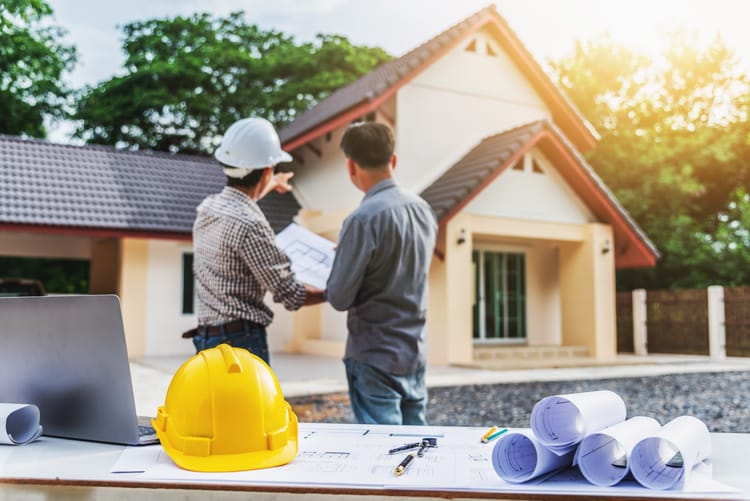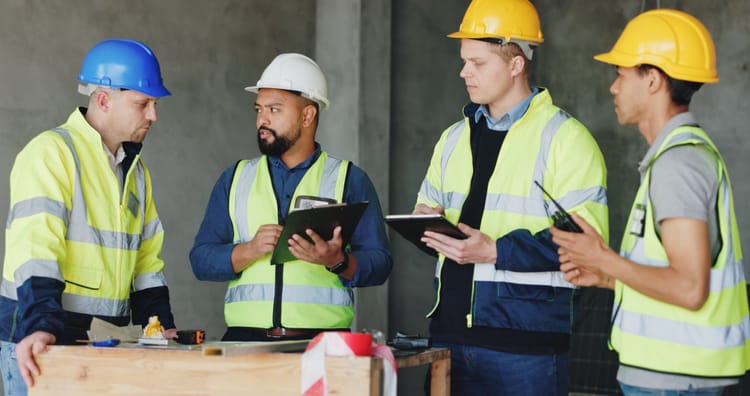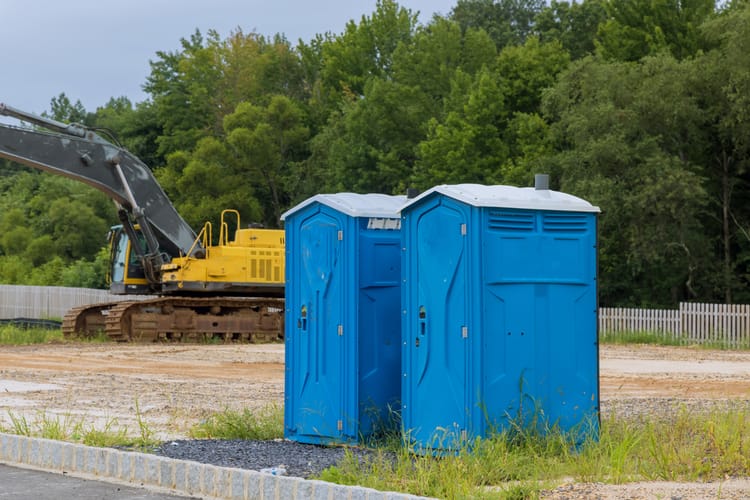Risk-proof your next job

Managing uncertainty is on every contractor’s mind. We're giving you actionable insights for reducing the strain with updated contracts and tariff whiplash plans. We also examine how technology and innovation can address housing affordability and accelerate rebuilding efforts after disasters.
And if you want to try something new to recruit young talent to your crew, we've included tips on how social media can help.

>> Aging in place. Explore the challenges of keeping an iconic building, with complicated mechanics functioning in this photo essay on the Innovation, Science and Technology Building at Florida Polytechnic.
>> Like a hurricane. With hurricane season underway, now’s a good time to watch Frontline’s investigation into the rebuilding effort in western North Carolina, including an exploration of construction, insurance and permitting practices.
>> Mind the gap. Meet the man who builds a suspension bridge spanning a roaring Andean river using only grasses, natural fibers and an ancient technique.
>> Baby needs a new pair of shoes! Boots not your thing? Watch Instagrammer @chucknastycarpentry convert a pair of standard-issue construction work boots into stylish (?) loafers.

Updated contracts reduce risk
On-again/off-again tariffs, immigration issues and rumors of supply chain disruptions and a recession make it harder to manage risk and price fluctuations. Consulting with an attorney experienced in the industry can help. The Level sat down with Hamilton Gardiner, a partner with Holmquist + Gardiner PLLC, to flag some issues that warrant your attention. -Margot Lester
What advice do you have for contractors to reduce uncertainty?
You want to make sure that the person you're contracting with is going to have the finances to pay for the job. Do they have the money? Can they make the payments? And if they're using financing, what is that financing and how are you involved with it? The reason is, money is not cheap right now. We’ve come off a 15-year high of cheap money. So payment terms and down payments are much more important than they may have been in the last decade and a half.
Should contractors be reviewing cost escalation clauses?
Cost escalation terms are a negotiation point with the customer. There should be a percentage threshold, say 20% or so. And something that often gets slipped up on is that if you're going to ask for an escalation, you have to show your receipts. You need to have supportive evidence, and that includes an invoice from said supplier that shows that your original cost was, let’s say, for lumber $100 and that the same lumber is now $150.
Are we entering force majeure territory with all this upheaval?
I don’t think so. But this is a good time to review your force majeure clause. If you're going to make a change, I think it's appropriate to add in pandemics, fires and other things to make sure it encompasses the types of events that are now more of a reality, along with where and how you're doing business. You should really review your entire contract. When was the last time you looked at it? Does it match your business practices? You don't necessarily need to talk to an attorney about it. You could do it yourself—that doesn't cost you any money, just some time and effort.
What’s a legal mistake contractors should avoid?
I understand why a lot of contractors like time-and-materials contracts. They take less effort on the front end but can lead to disputes on the back end. If you do a bad job of estimating your project, you did yourself a disservice and you're potentially looking to get sued on the back end for misrepresentation on the front end. If you're going to use time-and-materials contracts, make sure that you've done your homework, that you've done what you can to get good bids and that the customer understands what they're walking into. Make sure you can defend it.
Why should firms work with a lawyer specializing in construction?
The construction industry involves a lot of moving parts. Not only is it a contract between the contractor and the project owner, the contractor has several different contracts with subcontractors and tradespeople. There also may be contracts with vendors and suppliers. And then there are governmental agencies which involve permitting and inspections. And one other component is the financing piece. So if an attorney doesn't have at least an understanding of all the different moving parts and involved parties, it's going to be really hard for them to properly advise their clients and give a true outlook. Understanding contracts is great, but you also have to have an understanding of the ramifications of decisions made in the contract and how those are implemented in your actual business operations as a construction contractor.
Are you a contractor with something to say? Email us to be considered for a future Spotlight!

Leverage social media to recruit new talent
Although tariffs and other economic issues have some contractors rethinking bringing on new workers, others have an immediate need to fill core positions and replace employees exiting the industry. According to Associated Builders and Contractors, there is a deficit of almost 500,000 workers. The continuing need for new talent has construction leaders like Glenn Kelich using social media as a recruitment tool.
By giving followers a glimpse at the day-to-day of being a contractor and sharing tips and techniques along the way, Kelich hopes to spur interest in construction careers. Dr. Galen Clavio, associate dean for undergraduate education for the Media School at Indiana University Bloomington, endorses the tactic because most people don’t know what construction work truly entails. Social media posts, especially videos, reveal the range of skills required to get the job done on platforms that naturally appeal to younger job candidates.
Why it matters: About 20% of the construction workforce is over the age of 55, according to a survey by the Associated Builders and Contractors. With so many nearing retirement, construction firms need new recruiting strategies to keep crews full. (WRTV)
Tariff questions remain despite trade court ruling
Despite last week’s federal trade court decision blocking the president’s global tariffs, construction leaders are still unsure about what lies ahead. The matter is far from settled since administration officials have signaled their intention to appeal the ruling.
And even if the issue is settled in court, experts believe the administration will seek other ways to impose tariffs, including couching them as national security issues.
Why it matters: Just like planning for severe weather, contractors should plan for continued turbulence. Tactics include purchasing equipment and materials now while prices are lower, reviewing price-hike clauses in contracts and talking to your banker and CPA about cash management and financial strategies. (ACHR News)
Can innovation help solve the housing crisis?
One Virginia Tech professor says yes. In testimony to the U.S. House Committee on Financial Services’ Subcommittee on Housing and Insurance, Andrew McCoy explained how robotics, augmented reality, AI, automation, 3D concrete printing, prefabrication and digital project management can accelerate construction and improve affordability.
For example, concrete printing is fast and efficient, reducing material cost and lag time. Augmented reality tools allow framers and electricians to visualize BIM over projects so they can work quickly with fewer errors. Factory-built wall systems can be produced faster and more accurately, limiting waste and requiring only small adjustments on site.
Why it matters: After more than a decade of underproduction, U.S. housing inventory is far below what’s needed, creating a massive affordability problem. Meeting demand requires 3 to 6 million more residential units each year—and the only way to produce that much stock is to leverage innovation that amplifies human work. (The Roanoke Star)

>> Site safety: OSHA fines contractor $80K for trenching violations
>> Caught on camera: State bill introduced to boost work zone safety
>> Keep cool: Dynamic glass keeps sun, heat outside
>> Fishy forecast: Utilities skeptical of data center growth projections

"What was once considered 'alternative' or 'unconventional' may become standard, whether we’re ready or not."
-Sam Lubell, Los Angeles Times
The outsized need for rebuilding after disasters like wildfires, landslides and floods is accelerating the adoption of niche or alternative construction approaches. In Los Angeles, for example, many builders are relying more on prefabrication to speed time to completion and meet the spike in demand. Beyond the established modular approach, contractors are also using more 3D printed structural elements and turning to panelization to prebuild flat surfaces like walls, floors and roofing components. Swipe through the slides here.
Thanks for reading today's edition! You can reach the newsletter team at thelevel@mynewsletter.co. We enjoy hearing from you.
Interested in advertising? Email us at newslettersales@mvfglobal.com
Was this email forwarded to you? Sign up here to get this newsletter once a week.
The Level is written by Margot Lester and edited by Bianca Prieto.





